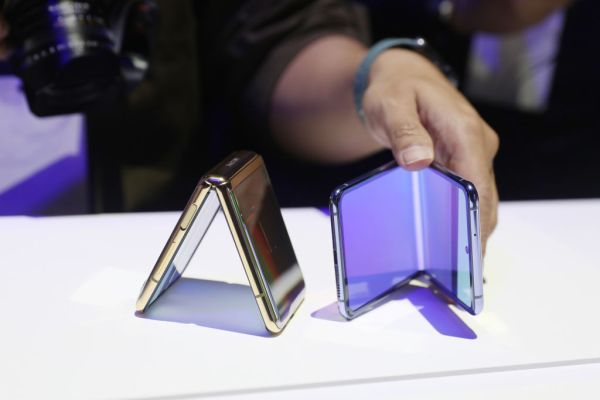For two years running, Samsung played the same trick and front-loaded its annual event by announcing a new foldable.
Last year’s announcement of the Fold was a huge one — the first viable (relatively speaking, of course) foldable handset from a major manufacturer. Of course, some stuff has happened in the intervening months, taking a bit of the shine off the device and the category at large.
This week at Unpacked 2020, Samsung came out of the gate swinging once again, announcing the Galaxy Z Flip at the top of the event. As with last year, the move had the effect of taking some of the wind out of its flagship announcement, a sign of a company convinced that standing out from the pack and reversing flagging smartphone sales trends will require some bold decision-making.
That’s not to say the company’s not pushing the envelope on its flagships. Between 100x zoom on the Ultra and 8K video on all of the devices, Samsung is still duking it out on imaging. But it appears not to have any illusions about what really gets users excited in an era of smartphone ubiquity.
Even imaging, long a primary battlefield for device makers, is entering the realm of niche updates. Beyond features that simply make it easier to get a better shot with minimal friction (Single Take is probably the best example of this), many features are currently lost on a number of normal users. It’s hard to imagine too many users spending too much time, say, shooting video in 8K.
Samsung will likely get a bump as it moves all devices to 5G. Most leading analysts seem to agree 5G will lead to at least a temporary reversal in sliding smartphone sales. Unless manufacturers are able to truly innovate, however, those numbers will ultimately prove little more than a blip on the radar.
The company should be lauded for putting itself out there with something radically different, though one can certainly ding the company for how it did so. The rollout of the Fold felt less like a first-generation device and more like a (expensive) bit of beta testing. The company very publicly went back to the drawing board with a more reinforced device.
In many ways, however, the damage had already been done. While the Fold issues were far less widespread than the Note’s, first impressions are important. And based on feedback from Motorola Razr early adopters, it seems feasible that the reboot of the iconic line might not fare all that much better. For Samsung, however, the Flip presents an important second chance to assure users of the viability of foldables.
At $1,400, the device is a fair bit cheaper than the Fold — but is still cost-prohibitive for most. Notably, that’s the same starting point as the super high-end Galaxy S20 Ultra. That device is far less novel, but at least it’s proven. The price of foldables will no doubt drop dramatically as companies are able to scale them, but in the meantime, the prohibitive price point has the added effect of controlling the size of the user base as Samsung tests a (hopefully) more rugged design.
Samsung’s event could ultimately prove an interesting bellwether for the mobile industry in 2020. Even as 5G goes mainstream for flagships, manufacturers will be restlessly eyeing the next big thing.
